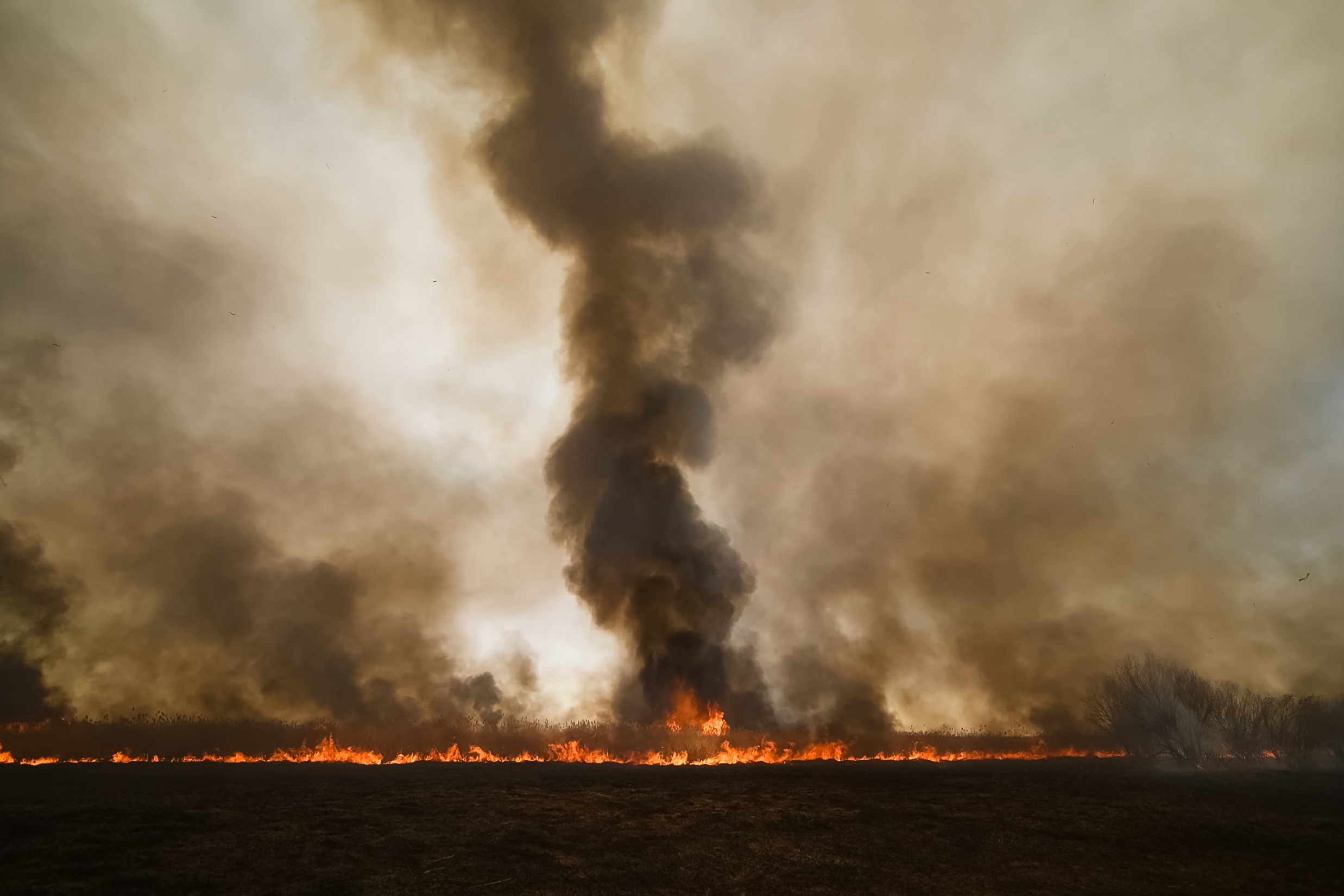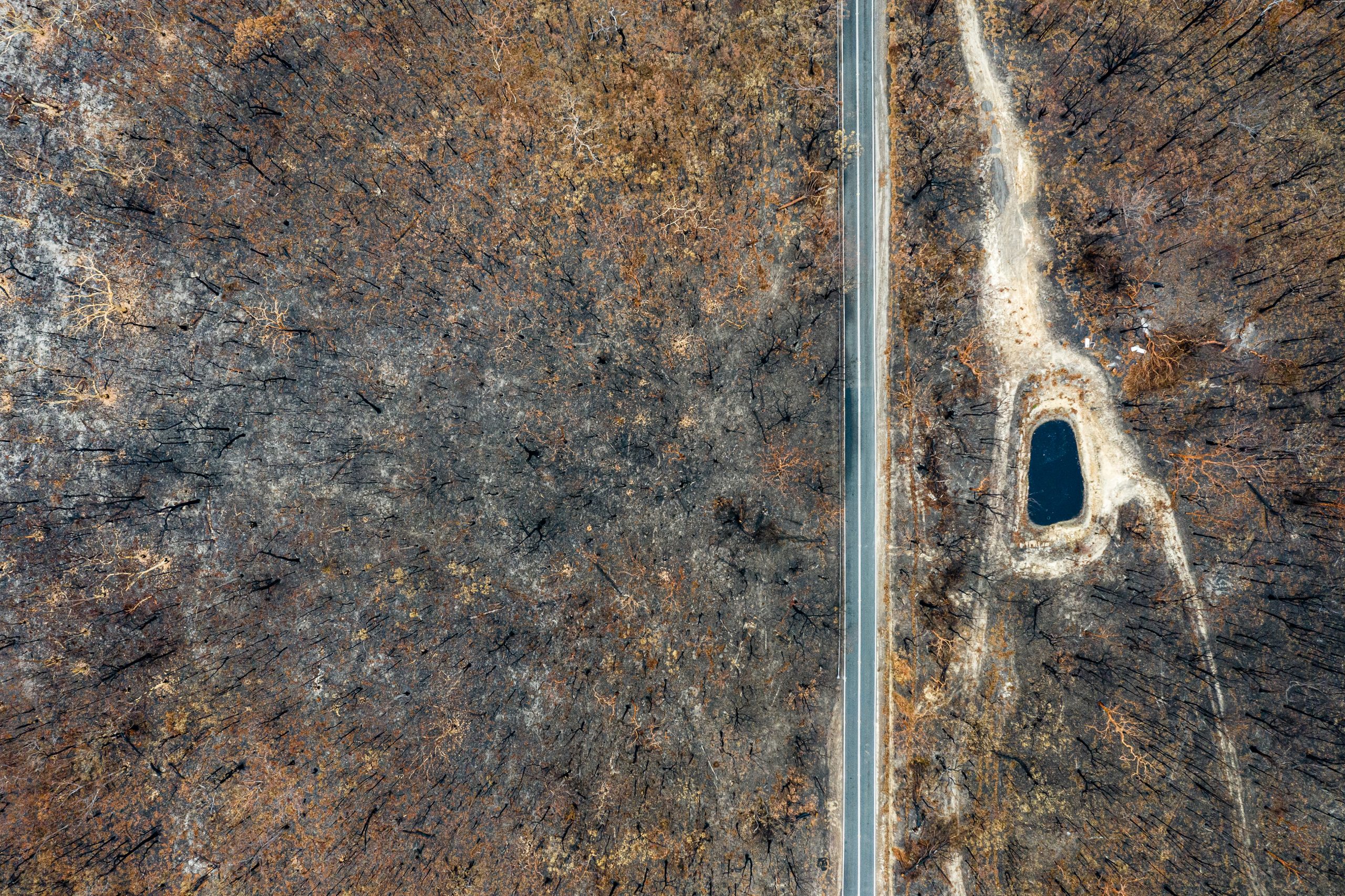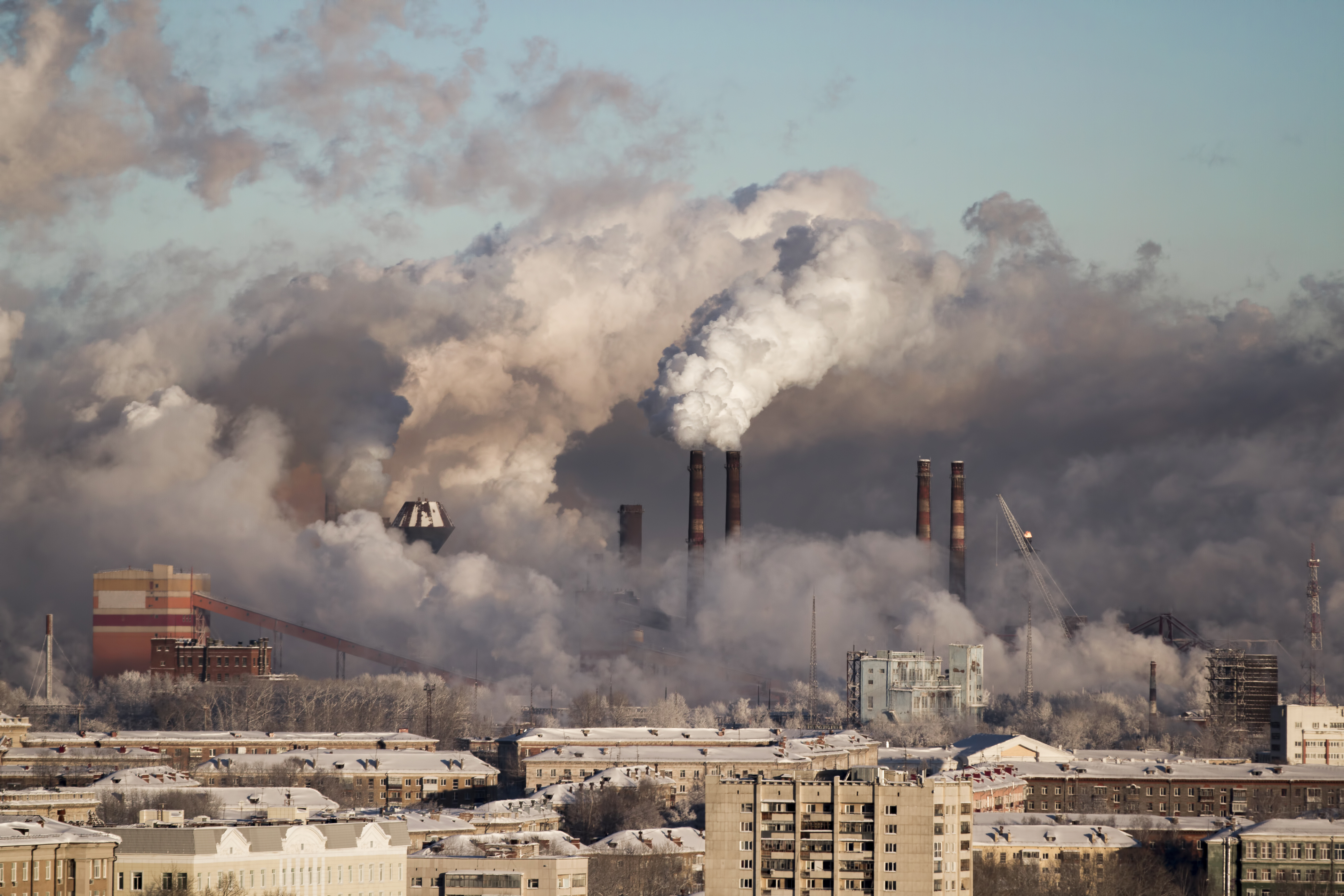During natural disasters, public media organisations can serve as vital sources of critical and lifesaving information, as demonstrated when Hurricane Ida hit the US in August.
By Desilon Daniels
On 26 August 2021, Ida was first identified as a tropical storm. By 4 September the storm had been upgraded to a category 4 hurricane, caused more than US$50 billion in damage, and killed more than 100 people. Southern and north-eastern states were particularly hard-hit: in Louisiana, the most affected state, the hurricane left millions without electricity, while in New York severe flooding shut down the transportation system.
The US public media system has hundreds of local and regional television and radio stations, making its network easily accessible to most Americans. National Public Radio (NPR), for instance, had an average of 26.1 million weekly listeners in 2020 while 2021 marked the 18th consecutive year the Public Broadcasting System (PBS) and its member stations were named America’s “most trusted institution” in a nationwide survey, with 86% agreeing that PBS stations provide an excellent value to communities. But it is particularly at times of crisis that NPR and PBS demonstrate their role as trusted, accessible, and resilient public media.
Maintaining constant coverage
PBS published a dedicated Hurricane Ida tag on its website. From 27 August, the public broadcaster maintained a live map to track the hurricane’s path, issued an explainer on the differences between Hurricane Ida and the 2005 Hurricane Katrina, and reported extensively on key developments. The broadcaster continues to report on the hurricane’s impact, including recovery efforts and a looming mental health crisis, which has been compounded by COVID-19.
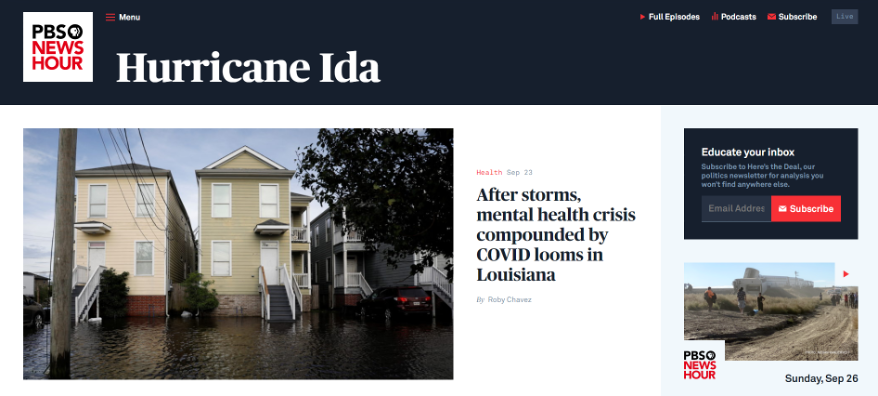
Similarly, NPR has provided extensive coverage of the hurricane and continues to do so today. The public media organisation has noted the challenge of some of its member stations to report on the hurricane while simultaneously protecting themselves from its impact. At WWNO in New Orleans, Louisiana, some staff were forced to evacuate the station to work remotely instead while others continued to report from New Orleans even with no power, phones, or studio. In an interview with NPR, Paul Maasen, WWNO’s General Manager, explained that after the station’s studio lost power due to a backup generator’s failure, staff took to streaming audio from a local TV station and then set up a simulcast of WRKF, an NPR member station in Baton Rouge, Louisiana.
“During the storm and its aftermath, reporters shared local and national stories across platforms, reaching audiences through national NPR shows, Twitter Spaces, the NPR One app, and more. WWNO’s work was critical to providing emergency, life-saving information to the people of New Orleans and beyond. Stories from WWNO reporters appeared on NPR’s website and on our air,” NPR reported.
Other member stations – such as KRVS in Lafayette and Mississippi Public Broadcasting – all maintained their vital public service by livestreaming NPR content.
Read more: Member stations teamed up to maintain service through Hurricane Ida
Producing content for children and parents
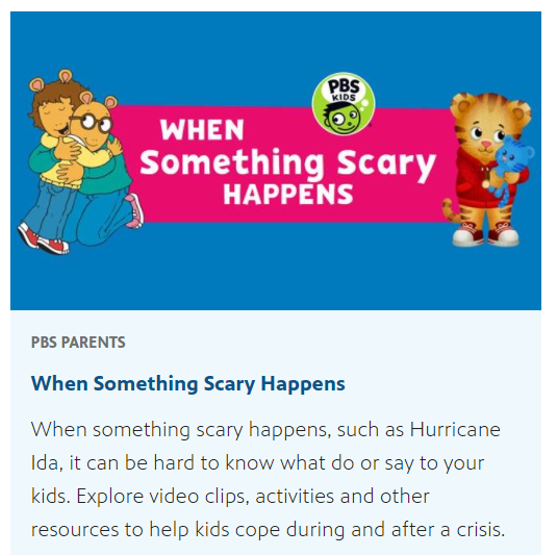
The PBS KIDS platform is renowned as a trusted source for children, parents, and educators. The brand serves as the main platform for most of PBS’s children’s programming and offers free access to media content, resources, and experiences to support learning for young children.
PBS made use of this existing platform in its coverage of Hurricane Ida. As the hurricane ravaged communities, PBS provided parents with resources and activities to help children cope and prepare before, during, and after a crisis.
Furthermore, PBS also made use of its Newshour Extra service for students and teachers, by publishing a Daily News Lesson on Hurricane Ida. With a focus on improving their media literacy, students were encouraged to watch a PBS Newshour report and discuss what happened and how communities could build resilience to storms.
Linking people and resources
Public media organisations do not only report on crises, but can act as vital emergency resources. Both PBS and NPR have a long history of providing essential resources during the annual hurricane season.
Louisiana Public Broadcasting has collated extensive emergency information – including updates from the state’s governor; tweets from the National Hurricane Center; important numbers; and children’s resources – online to help keep residents updated and safe.
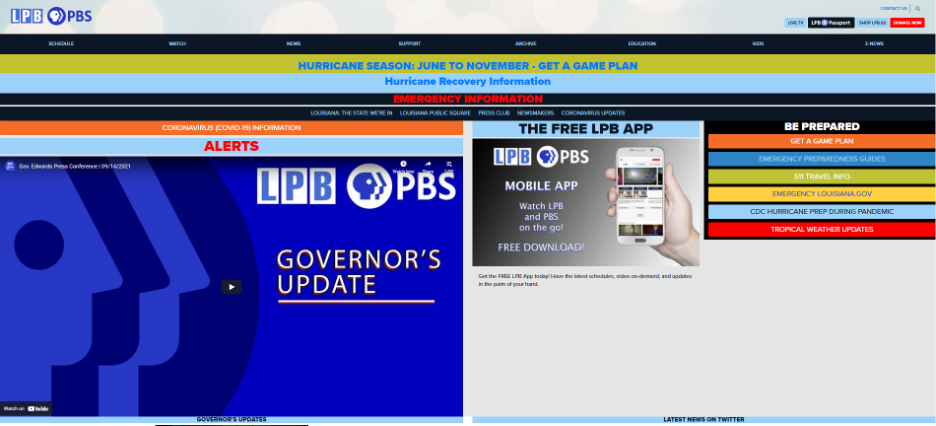
PBS also provided information on how to help people affected by Hurricane Ida and tips for staying safe and informed on the ground in Louisiana.
Meanwhile, NPR’s WWNO published ways for the public to access direct assistance from the Federal Emergency Agency (FEMA), such as cash and rental assistance, transitional sheltering in nearby states, and temporary roof repairs. WWNO also offered information on how to avoid FEMA scams.
Highlighting local news perspectives
With their extensive geographic coverage, US public media are in the unique position to report from communities both large and small. While much of the coverage of Hurricane Ida has focused on the national and state level, both NPR and PBS have also highlighted the disaster’s impact on smaller communities.
In Houma, Louisiana, NPR highlighted the community’s difficulty in recovering after Hurricane Ida hit. Residents are concerned that their community does not receive the same attention as the much larger New Orleans.
Similarly, on 22 September PBS’s community journalist Roby Chavez reported on how the coastal parishes of Terrebonne and Lafourche are struggling with a growing housing crisis and continued power outages. Like those in Houma, residents of these parishes feel forgotten.
By highlighting local and minority perspectives during times of crisis, public media organisations are encouraging the efficiency of local and state government, building social cohesion and citizen engagement, and ultimately fostering democracy by holding power to account.
Sustaining public media
Coverage of the hurricane from both NPR and PBS have shown that public media can adapt and innovate in the face of difficulties. In many countries, public media organisations are leading the way in reporting on climate change, a key contributor to natural disasters. In the US, for instance, NPR and its member stations have launched several initiatives in recent years and created roles within newsrooms specially dedicated to ongoing coverage of climate change impacts and solutions.
But despite their adaptability and commitment to climate change reporting, public media must be sustainably and well-funded to truly fulfil their public service role. The Corporation for Public Broadcasting (CPB), in its request for $300 million in federal funding to support public media infrastructure, noted that 86% of TV stations and 75% of radio stations delay replacement of technology equipment when they are cash-strapped.
Public media organisations cannot afford to lose critical funding and the infrastructure needed to meet their mandates. Particularly as climate change is expected to result in worse disasters in the future, PSM must be well-positioned to meet their duty of providing coverage that is fact-based, timely, and helps to make sense of the social, political, and economic contexts surrounding climate change.
Header Image: New Brunswick, NJ USA – September 2, 2021: City of New Brunswick flooded after Hurricane Ida. Credit: Sarah J Lee / Shutterstock
